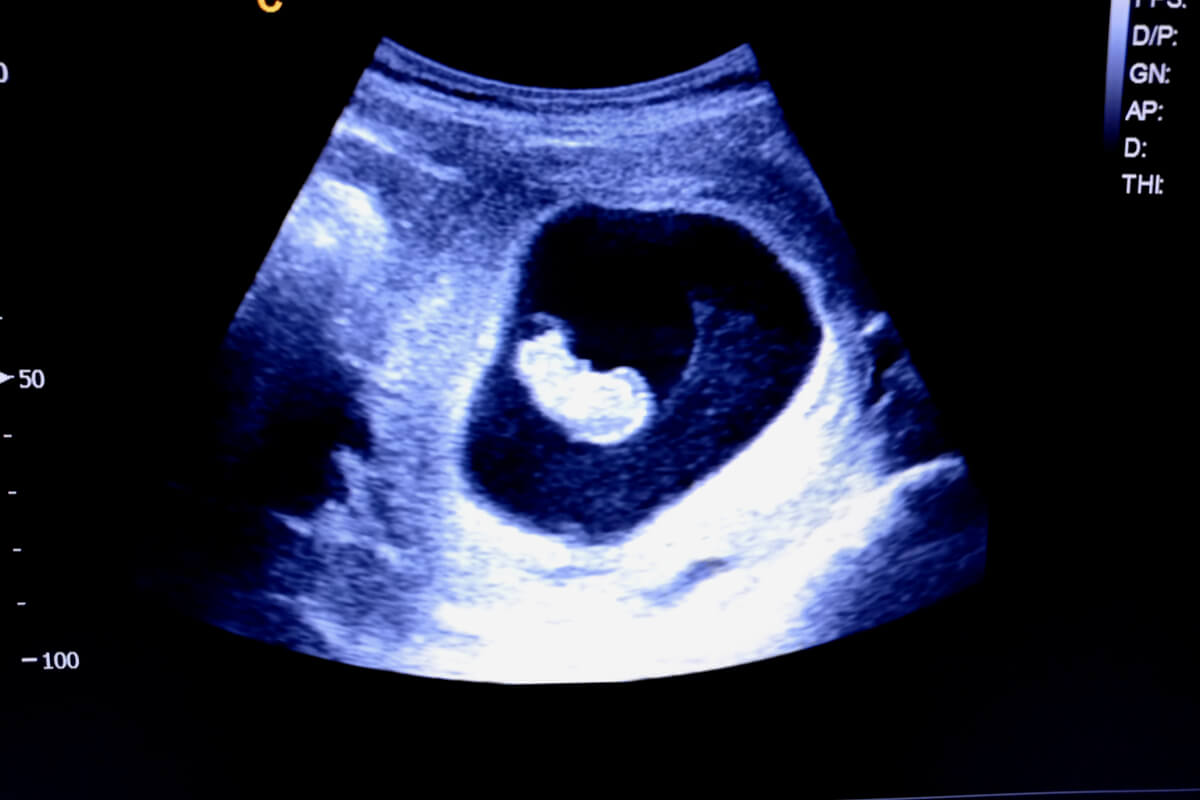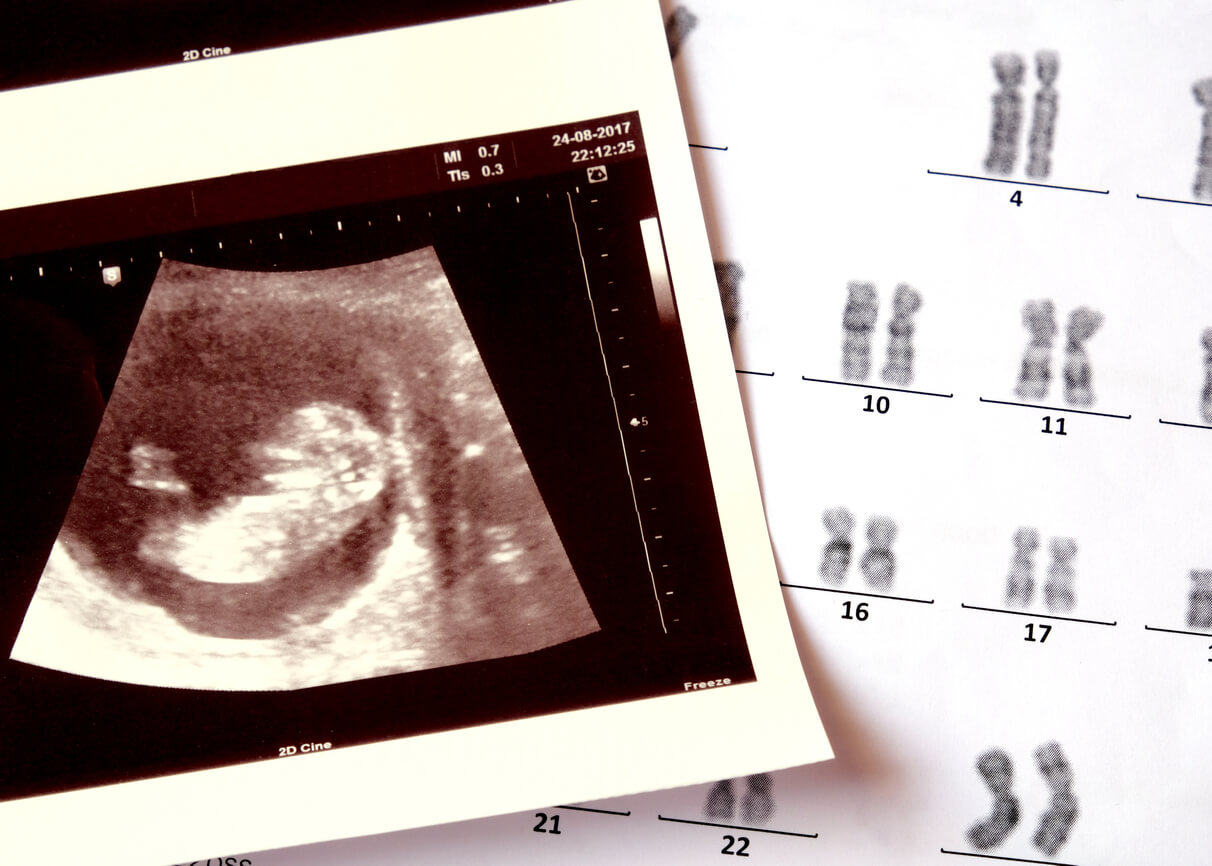Knowing the Sex of Your Baby at the First Ultrasound: Is It possible?


Written and verified by the nurse Leidy Mora Molina
Until now, knowing the sex of your baby in the first ultrasound scan seemed to be quite complicated and people had to wait until the second trimester to give the news.
However, gynecologist Saad Ramzi suggested an ultrasound marker that makes it possible to estimate the sex of the baby as early as the sixth week of gestation. Do you want to know what it is? We’ll tell you all about it below.
The Ramzi method, a way to know the sex of the baby in the first ultrasound scan
One of the biggest questions of mothers-to-be after finding out their condition is the sex of their baby. Although there are many scientific advances, this concern can only be confirmed in the second trimester of gestation, from the direct observation of the fetal genitalia.
In an attempt to give earlier answers to pregnant women, gynecologist Saad Ramzi conducted a scientific study whose conclusions led to the creation of the Ramzi method.
This strategy makes it possible to predict the sex of the baby from the first ultrasound scan, as it’s based on the location of the placenta and chorionic villi from the sixth week of gestation.
For this doctoral study, Dr. Ramzi evaluated some 5376 pregnant women and their first ultrasound scans. From the analysis of the data, he found the following:
- In 97.2 % of the ultrasound scans where the placenta or chorionic villi were on the right, the babies were boys (carried XY chromosomes).
- In 97.5 % of the cases where the placenta or chorionic villi were on the left, the babies were girls (carried XX chromosomes).
To verify the suspicions, the doctor repeated the ultrasounds on these pregnant women between 18 and 20 weeks and there, he confirmed the correct sex of their babies in 98% of the cases.

How is the Ramzi method applied?
To determine the location of the placenta it’s necessary for the mother to undergo a Doppler ultrasound from the sixth week of gestation. This will show a bright area around the gestational sac, which is the place where this organ will grow. To determine whether it’s on the right or on the left, it’s necessary to take into account the mirror effect of this study.
How reliable is the Ramzi method?
According to Dr. Ramzi, this method has an accuracy of 97% to know the sex of the baby from the sixth week. However, the gynecologist’s research has many detractors, especially because so far, it hasn’t been endorsed by any reputable scientific journal.
In this regard, at the XX World Congress of Ultrasound in Obstetrics and Gynecology (2010), another study was presented whose purpose was to correlate placental location and the prediction of the baby’s sex in the first weeks of life. This study concluded that there is no clear association between the two factors. Furthermore, observation of the genital tubercle (week 13) is still the best strategy for predicting the sex of the baby.
How else can you know the sex of your baby in the first trimester?
If you want to confirm the sex of your baby early in gestation, the best approach is to use the fetal DNA test. This study analyzes the genetic material of the baby that’s free in the pregnant woman’s blood and can be performed from the 10th week after conception. The main indications for fetal DNA testing include the early detection of some chromosomal diseases, such as Down syndrome, Patau’s syndrome, and Edwards’ syndrome. However, in the process of analyzing the chromosomes of the baby, the “sex pair” can be observed: XX indicates a female fetus, while XY indicates a male one.

About prenatal diagnosis of your baby’s sex
If you’re one of those mothers who aren’t curious to know the sex of the baby from the beginning, then you can wait until the baby’s more developed. Therefore, in the second trimester, the doctor will be able to objectively assess the baby’s genital organs and confirm whether it will be a girl or a boy.
After all that’s been said, we must conclude that it’s unlikely to know the sex of the baby in the first ultrasound, although there are some methods that may suggest some clues. Talk about it with your doctor and don’t miss any ultrasound during pregnancy because besides knowing this information, they’re performed to evaluate other aspects of the health of both you and your child.
Until now, knowing the sex of your baby in the first ultrasound scan seemed to be quite complicated and people had to wait until the second trimester to give the news.
However, gynecologist Saad Ramzi suggested an ultrasound marker that makes it possible to estimate the sex of the baby as early as the sixth week of gestation. Do you want to know what it is? We’ll tell you all about it below.
The Ramzi method, a way to know the sex of the baby in the first ultrasound scan
One of the biggest questions of mothers-to-be after finding out their condition is the sex of their baby. Although there are many scientific advances, this concern can only be confirmed in the second trimester of gestation, from the direct observation of the fetal genitalia.
In an attempt to give earlier answers to pregnant women, gynecologist Saad Ramzi conducted a scientific study whose conclusions led to the creation of the Ramzi method.
This strategy makes it possible to predict the sex of the baby from the first ultrasound scan, as it’s based on the location of the placenta and chorionic villi from the sixth week of gestation.
For this doctoral study, Dr. Ramzi evaluated some 5376 pregnant women and their first ultrasound scans. From the analysis of the data, he found the following:
- In 97.2 % of the ultrasound scans where the placenta or chorionic villi were on the right, the babies were boys (carried XY chromosomes).
- In 97.5 % of the cases where the placenta or chorionic villi were on the left, the babies were girls (carried XX chromosomes).
To verify the suspicions, the doctor repeated the ultrasounds on these pregnant women between 18 and 20 weeks and there, he confirmed the correct sex of their babies in 98% of the cases.

How is the Ramzi method applied?
To determine the location of the placenta it’s necessary for the mother to undergo a Doppler ultrasound from the sixth week of gestation. This will show a bright area around the gestational sac, which is the place where this organ will grow. To determine whether it’s on the right or on the left, it’s necessary to take into account the mirror effect of this study.
How reliable is the Ramzi method?
According to Dr. Ramzi, this method has an accuracy of 97% to know the sex of the baby from the sixth week. However, the gynecologist’s research has many detractors, especially because so far, it hasn’t been endorsed by any reputable scientific journal.
In this regard, at the XX World Congress of Ultrasound in Obstetrics and Gynecology (2010), another study was presented whose purpose was to correlate placental location and the prediction of the baby’s sex in the first weeks of life. This study concluded that there is no clear association between the two factors. Furthermore, observation of the genital tubercle (week 13) is still the best strategy for predicting the sex of the baby.
How else can you know the sex of your baby in the first trimester?
If you want to confirm the sex of your baby early in gestation, the best approach is to use the fetal DNA test. This study analyzes the genetic material of the baby that’s free in the pregnant woman’s blood and can be performed from the 10th week after conception. The main indications for fetal DNA testing include the early detection of some chromosomal diseases, such as Down syndrome, Patau’s syndrome, and Edwards’ syndrome. However, in the process of analyzing the chromosomes of the baby, the “sex pair” can be observed: XX indicates a female fetus, while XY indicates a male one.

About prenatal diagnosis of your baby’s sex
If you’re one of those mothers who aren’t curious to know the sex of the baby from the beginning, then you can wait until the baby’s more developed. Therefore, in the second trimester, the doctor will be able to objectively assess the baby’s genital organs and confirm whether it will be a girl or a boy.
After all that’s been said, we must conclude that it’s unlikely to know the sex of the baby in the first ultrasound, although there are some methods that may suggest some clues. Talk about it with your doctor and don’t miss any ultrasound during pregnancy because besides knowing this information, they’re performed to evaluate other aspects of the health of both you and your child.
All cited sources were thoroughly reviewed by our team to ensure their quality, reliability, currency, and validity. The bibliography of this article was considered reliable and of academic or scientific accuracy.
- I chan, S. (2010). P18.17: The role of placental location assessment in the prediction of fetal gender. Ultrasound in obstetrics and gynecology. Recuperado de: https://obgyn.onlinelibrary.wiley.com/doi/full/10.1002/uog.8569
- Mirbolouk, F. et al. (2019).The Association between Placental Location in the First Trimester and Fetal Sex. Journal of Pharmaceutical Research International, Page 1-8. Recuperado de: https://journaljpri.com/index.php/JPRI/article/view/30183
- The relationship between placental location and fetal gender (ramzi’s method). Recuperado de: https://www.contemporaryobgyn.net/view/relationship-between-placental-location-and-fetal-gender-ramzis-method
This text is provided for informational purposes only and does not replace consultation with a professional. If in doubt, consult your specialist.








